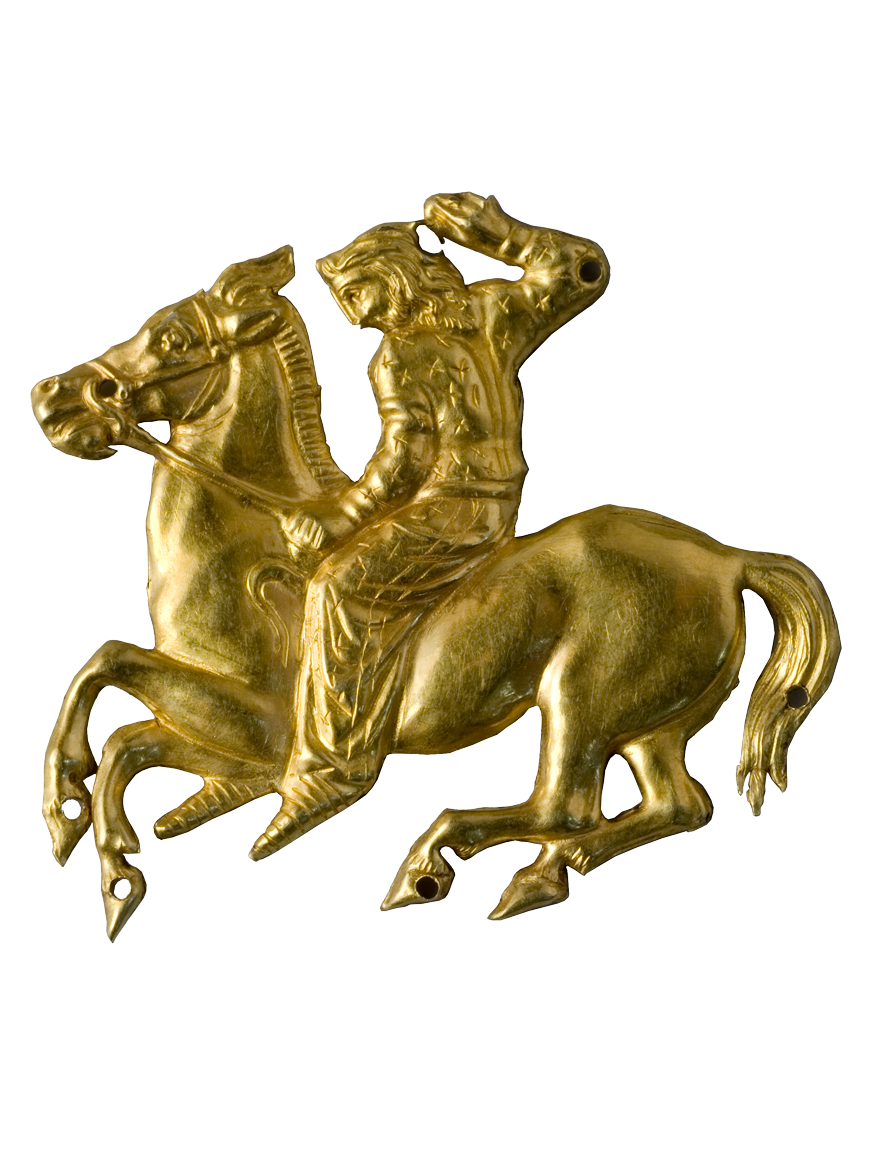Sew-on plaque depicting a horseman

The plaque is from the famous burial barrow Kul Oba that was located not far from the city Kerch near the road that leads to Feodosia. In ancient times on that territory the capital of the Bosporan Kingdom was placed - the Panticapaeum, and the burial barrow was created not far from the city. Several holes were made along the perimeter on figured plaque with a relief image of a Scythian on a horse. The appearance of the horseman is typically Scythian: a short wrap caftan, bouffant pants covering with pleats soft boots without hills (or shoes). The caftan and pants are decorated with tiny crosses all over the surface. The man has his hair falling down the shoulders freely and brushed up on his forehead, he has a mustache and a beard. The right hand of the horseman is raised over the head, the left hand carries the rein ends of which are falling down freely. The horse does not have any saddle. There is no harness on its chest. Only a head harness with a snaffle, а round ring or a plaque-spreader on a crossing of belts of a head harness. Images on plaques had a huge meaning and were sewed on clothing forming complete meaningful compositions.
Exhibits' purpose of use. These small plaques made of gold-foil with relief images and holes made near the edges were sewed on a clothing of a buried.
Uniqueness – golden sew-on plaques are known due to materials of excavations of a variety of burial barrows of the northern coast of the black sea.
